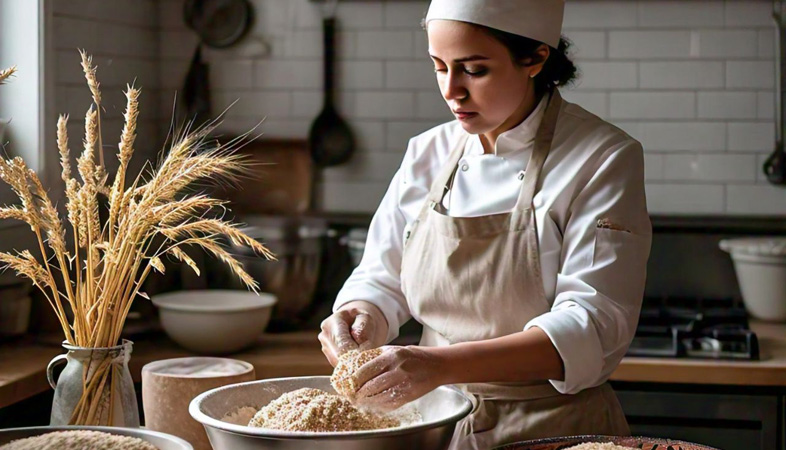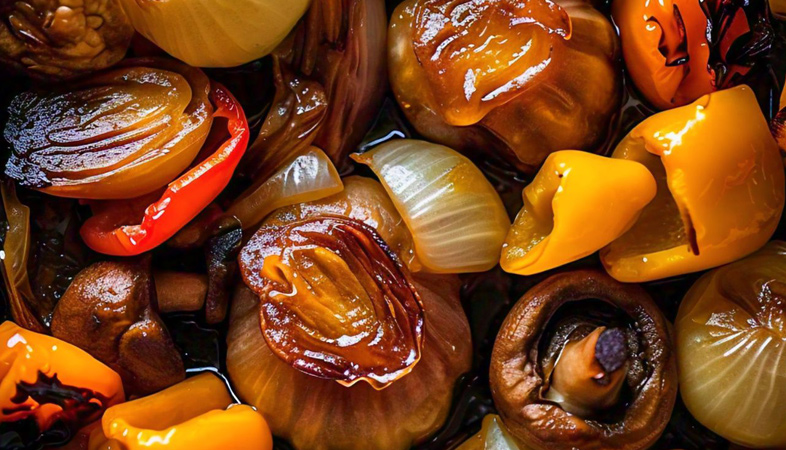The Ultimate Guide to Baking with Whole Grains: Healthy Alternatives to Refined Flour
As people become more conscious of their health and nutrition, there is a growing interest in exploring healthier alternatives to refined flours.
Baking with whole grains is becoming an increasingly popular
choice for home bakers and professional chefs alike. As people become more
conscious of their health and nutrition, there is a growing interest in
exploring healthier alternatives to refined flours. Whole grains are packed
with nutrients, fiber, and antioxidants, making them an excellent choice for
creating more wholesome baked goods. Whether you're baking bread, cakes, or
cookies, incorporating whole grains into your recipes can provide numerous
health benefits without compromising on flavor or texture. In this guide, we’ll
explore the benefits of whole grains and how to use them in your baking.
Whole grains are unrefined grains that contain all three parts of the grain—the bran, germ, and endosperm. This means they retain more of their natural nutrients compared to refined grains, which have been stripped of the bran and germ during processing. Whole grains are rich in fiber, vitamins, minerals, and antioxidants, which can contribute to better digestive health, heart health, and overall well-being. When you bake with whole grains, you’re not only making your treats more nutritious but also giving them a fuller, heartier flavor that’s absent from many products made with refined flour.
One of the most common whole grains used in baking is whole wheat. Whole wheat flour has a denser texture and a nuttier, more robust flavor compared to all-purpose flour. It can be used in a wide range of baked goods, from breads to muffins and even cookies. While whole wheat flour can often be substituted for refined flour in most recipes, it’s important to note that it may affect the texture and density of your baked goods. To prevent the final product from being too heavy or dry, many bakers recommend using a blend of whole wheat flour and all-purpose flour, especially in cakes and pastries.
Another popular whole grain flour is oat flour, which is made from ground oats. Oats are naturally gluten-free, making oat flour an excellent alternative for those with gluten sensitivities. Oat flour adds a mild, slightly sweet flavor and works particularly well in cookies, pancakes, and muffins. You can either purchase pre-made oat flour or make your own by grinding rolled oats in a food processor or blender. If you’re using oat flour in baking, you may need to adjust the liquid content of your recipe, as oat flour tends to absorb more moisture than regular flour.
Rye flour is another option for whole grain baking, known for its distinctive tangy flavor. Rye flour is commonly used in breads, particularly for making rye or pumpernickel bread. Like whole wheat flour, rye flour has a denser texture, but it can also lend a unique flavor and texture to other baked goods such as crackers and cookies. Rye flour can be used on its own or mixed with other flours to add complexity and flavor to your baked treats. If you’re working with rye flour, you might want to experiment with different ratios to achieve the desired texture.
Barley flour is a lesser-known but versatile whole grain flour that works well in both savory and sweet baked goods. It’s often used in combination with other flours due to its mild flavor and slightly low gluten content. Barley flour is a great addition to whole grain breads, muffins, and cookies, providing a slight sweetness and a tender crumb. Like oat flour, barley flour is a good choice for gluten-free baking, though it may not provide the same structure as wheat-based flours, so a binder like xanthan gum or guar gum might be needed.
Baking with whole grains is a fantastic way to make your favorite baked goods healthier without sacrificing flavor or texture. Whole grains like whole wheat, oat, rye, and barley flour add a rich, nutty flavor to your recipes while providing a wealth of nutrients that refined flours lack. By experimenting with different whole grain flours and adjusting your recipes to accommodate their unique properties, you can create delicious, wholesome treats that everyone can enjoy. Whether you’re looking to boost the nutritional value of your baking or simply want to try something new, whole grain baking offers endless possibilities for healthier, tastier treats.
.png)





























